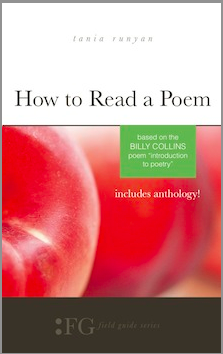When I think of poets who tell stories, I think of Chaucer, Milton, Dante, Tennyson and Longfellow. Storytelling isn’t something I usually associate with contemporary poetry. Two recent collections by poets Joan Murray and Ellen Kombiyil, however, both utilize storytelling, although they do it in entirely different ways.
Murray has been publishing poetry for the last 25 years, and this year has an expanded volume, Swimming for the Ark: New and Selected Poems. In addition to new poetry, she draws upon poems from four volumes published between 1990 and 2015.
Her poems tell stories. In fact, given the poems included in this new volume, Murray has been a storytelling poet from the beginning.
“Her Head, ” included in this new volume, is a good example.
Near Ekuvukeni,
in Natal, South Africa,
a woman carries water on her head.
After a year of drought,
when one child in three is at risk of death,
she returns from a distant well,
carrying water on her head.
The pumpkins are gone,
the tomatoes withered,
yet the woman carries water on her head.
The cattle kraals are empty,
the goats gaunt—
no milk now for children,
but she is carrying water on her head.
The engineers have reversed the river:
those with power can keep their power,
but one woman is carrying water on her head.
In the homelands, where the dusty crowds
watch the empty roads for water trucks,
one woman trusts herself with treasure,
and carries water on her head.
The sun does not dissuade her,
not the dried earth that blows against her,
as she carries the water on her head.
In a huge and dirty pail,
with an idle handle,
resting on a narrow can,
this woman is carrying water on her head.
This woman, who girds her neck
with safety pins, this one
who carries water on her head,
trusts her own head to bring to her people
what they need now
between life and death:
She is carrying them water on her head.
The language is simple and straightforward; nothing abstract to leave you guessing at meaning. But those simple and straightforward words tell a profound story about a woman carrying water on her head.
The volume also includes 15 of the 48 poems published as Queen of the Mist (1999), which both individually and collectively tell the story of the first person (a woman) to go over Niagara Falls in a barrel. Each poem is a separate story; together they present a woman who was struggling to provide for herself and discovered a way to do that—including going on the lecture circuit after the event and taking her barrel along for a prop, and doing that for 20 years.
Murray’s other collections are The Same Water (1990), Looking for the Parade (2000), and Dancing on the Edge (2002). She’s received two poetry fellowships for the National Endowment for the Arts, and her poems have appeared in numerous publications and anthologies. She’s been Poet in Residence at the New York State Writer’s Institute, and some of her work has been adapted for the stage. She lives in New York.
At first glance, the poems of Ellen Kombiyil seem familiar to a reader of contemporary poetry. Most of the poems in Histories of Future Perfect are relatively short; some do without punctuation and use more abstract language and concepts than Murray’s. And yet a closer reading shows that Kombiyil is also a master of telling a story, in short and concise ways.
Look at what she does with “Recurring 1, ” which could be a story of death, of a failed love affair, and perhaps both.
Recurring 1

it’s an old dream manufactured people
once known are dancing no sweat no smell
vision of frivolous spinning spills
diamonds on the dance floor & you are
not dead your apparition in the frame
of someone else’s photo here & not-
here here I see you not-here drawn back
through a tunnel black the world not yet
beginning to close where you emerge
smiling & whole I tell you I miss you
with my hear not my words because you are
a word for both longing & sorrow
& I claim you now with my silent mouth
The collection includes several of what I’d call “historical poems, ” or at least poems with historical subjects—Mary Lincoln trying to reach her dead son Willie; William McKinley’s wife Ida having a premonition of his assassination; a letter written at the end of the Civil War. Kombiyil addresses more familiar subjects, too, like Kurt Cobain, eating at a Denny’s restaurant, and stories from childhood.
Kombiyil is a native of Syracuse, New York, and graduated from the University of Chicago. Her poems have been published in the Beloit Poetry Journal, Cider Press Review, Cordite Poetry Review, MiPOesias, Poemeleon, and Spillway, among others. She was nominated for Best of the Net 2012 and is a four-time Pushcart Prize nominee. She lived for 11 years in Bangalore, India, with her husband and two children, and currently lives in New York City.
Murray and Kombiyil demonstrate how even contemporary poets can tell powerful stories through poetry.
Photo by Roman Pfeiffer, Creative Commons, via Flickr. Post by Glynn Young, author of the novels Dancing Priest and A Light Shining, and Poetry at Work.
__________________________

“I require all our incoming poetry students—in the MFA I direct—to buy and read this book.”
—Jeanetta Calhoun Mish
- Poets and Poems: Christine Rhein and “Wild Flight” - October 16, 2025
- Poets and Poems: Peter Murphy and “You Too Were Once on Fire” - October 14, 2025
- “Your Accent! You Can’t Be from New Orleans!” - October 9, 2025




Mary Sayler says
Thanks for these good words on poetry and poetry writing! I highlighted your post on the Christian Poets & Writers blog http://www.christianpoetsandwriters.com. God bless.
Glynn says
Mary – thank you!
Maureen says
Both have great subjects for their collections.
Pat Durmon says
I am clearly taken by Joan Murray’s narrative poetry, and I read Recurring I twice. Your review is well-done. Help me understand the importance of such a review. Benefits. How does a writer get a review of this type? I’ve asked several poets. They know what I know: reviews on Amazon and Good Reads. Nothing beyond that. And yet, I continue to see what you and Mary Sayer are putting out. I’m missing something. My poet friends are too. Would you help me understand? I will pass it on to those I’ve asked also. Thank you.
Glynn says
Pat, the purpose of a poetry review is different for poets and poetry readers, although the purposes may converge at some point. For a poet, a review can (1) publicize the book and (2) gain additional understanding or see meanings he or she may not have understood themselves about their own work (this has happened to me several times with the two novels I’ve written). For a reader of poetry, a review serves to help find new poets and collections, and offers some insight into what the collection is about.
Most reviews on Amazon and Good Reads tend to be one or two sentences, basically saying whether the reader liked it or not. A few publications go into extensive analyses of books and poetry collections. We aim for something in between here at Tweetspeak. Most of the reviews I do are for books and collections I find on my own. The ones I do for Poetic Voices are sent first to the editor.
Thanks for reading and for your comment.